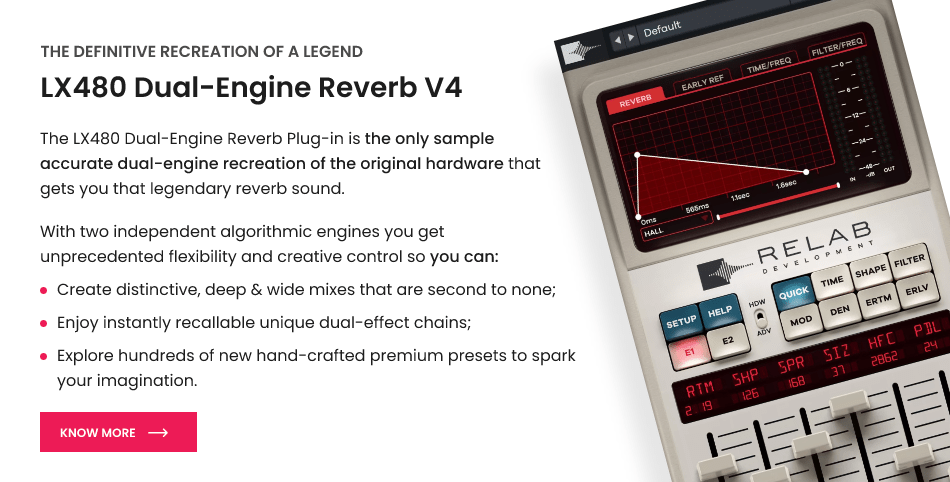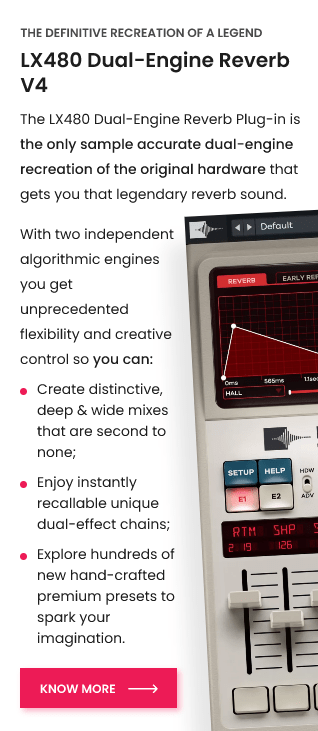Creating a realistic hall reverb sound can transform your audio production from ordinary to extraordinary. The Relab LX480 Dual-Engine reverb plug-in is a powerful tool to help you quickly achieve this. In this exclusive tutorial, we’ll walk you through the steps to craft the perfect hall reverb sound using the LX480 and give you a taste of the magic that awaits in our video tutorial.
The LX480 is known for its versatility and ability to emulate highly sought-after lexicon-style reverbs. But with great power comes great responsibility, and the key to unlocking the full potential of this plug-in lies in understanding its various settings and parameters. Our tutorial will guide you through creating a smooth, natural-sounding hall reverb that adds depth and richness to your audio production.
To start, set the Decay Optimization (DCO) to one of the reverb modes. This crucial step links parameters like shape, spread, and reverb time to the size parameter, allowing you to maintain a realistic space throughout the process. Next, adjust the size and reverb time parameters to create a more natural and less zippy sound, closely resembling a hall.
Once you’ve set the foundation, it’s time to refine the reverb by modifying the shape and spread parameters. This will create a natural bloom effect, giving the dry sound its moment to shine before the reverb tail takes over. Our tutorial will demonstrate the dramatic difference this makes in creating an immersive audio experience.
As you continue to shape your realistic hall reverb, focus on reducing the high-frequency content using the high multiply parameter. This will ensure that the high frequencies decay faster than the mids or lows, resulting in a smoother sound. Next, boost the low frequencies and adjust the high-frequency multiplier to achieve the perfect balance for an average concert hall sound.
The final touches involve bringing down the high-frequency cutoff to further reduce the top end and setting the diffusion in the density page to near maximum for a dense, highly diffuse hall sound. With these expert tips, you’ll be well on your way to creating a captivating audio experience that rivals the best in the business.
But don’t just take our word for it – see it in action! Our video tutorial at the end of this article breaks down each step in detail, showcasing the power of the Relab LX480 Dual-Engine reverb plug-in and guiding you through crafting a stunning realistic hall reverb sound. You’ll witness this plug-in’s transformative impact on your audio production and learn valuable insights that can be applied to future projects.
So, if you’re ready to elevate your audio game and achieve professional-quality realistic hall reverb, look no further. This Wired exclusive tutorial has everything you need to become an LX480 expert and make your audio productions stand out.
Take advantage of this opportunity to learn the ins and outs of the Relab LX480 and create your own realistic hall reverb sound. Watch the video tutorial below and prepare to be amazed by the world of possibilities that await you!





